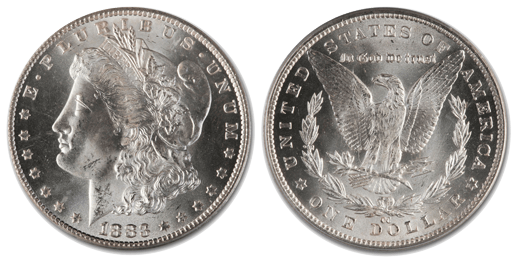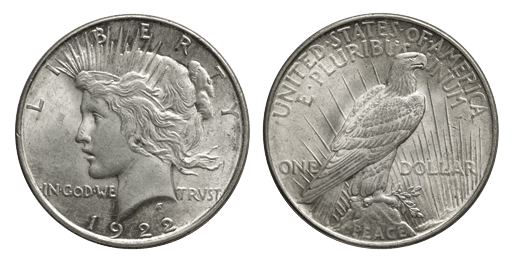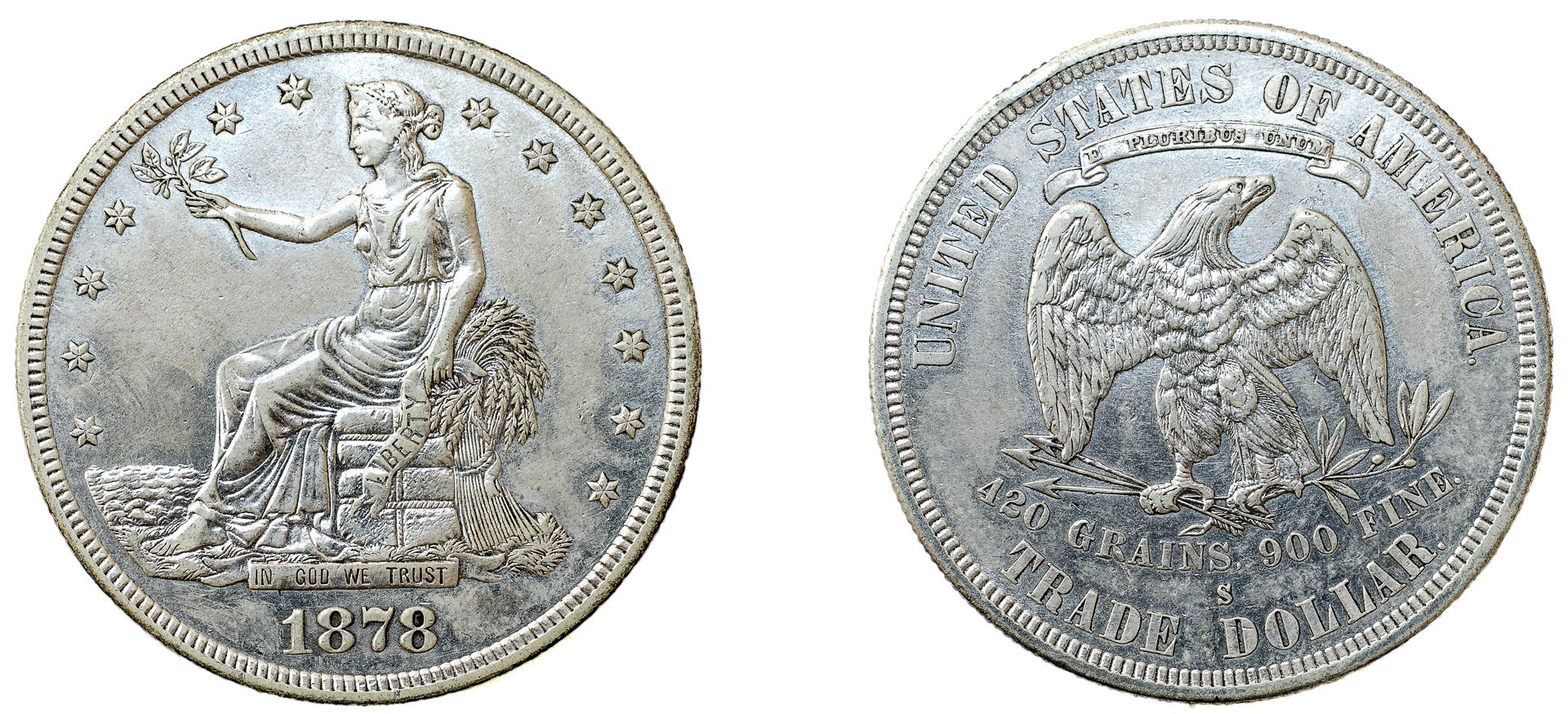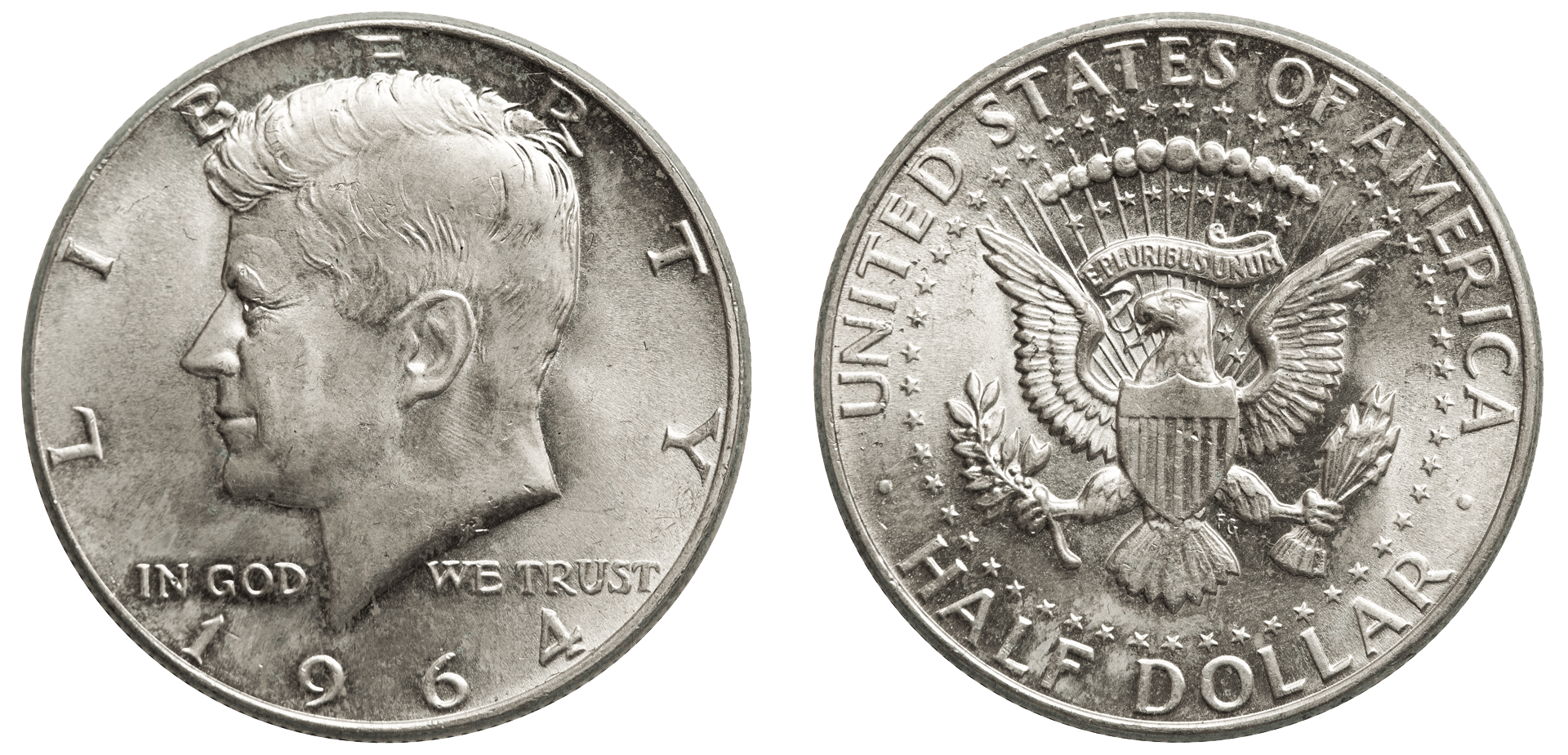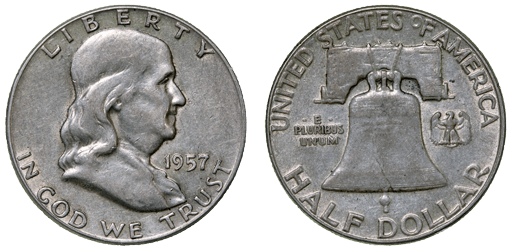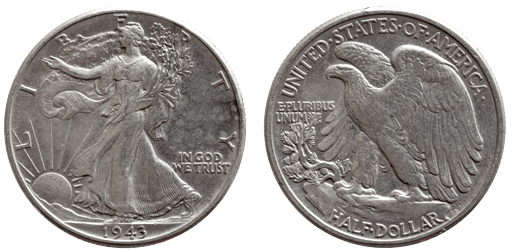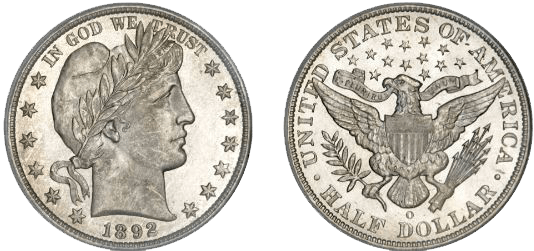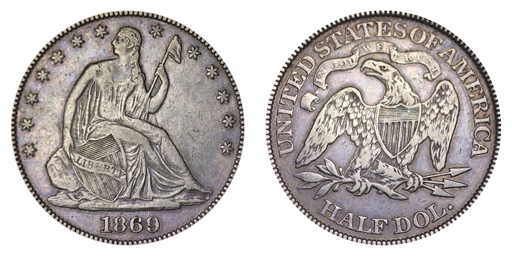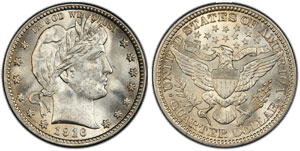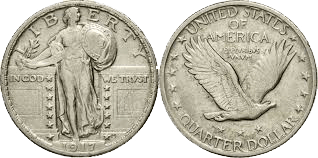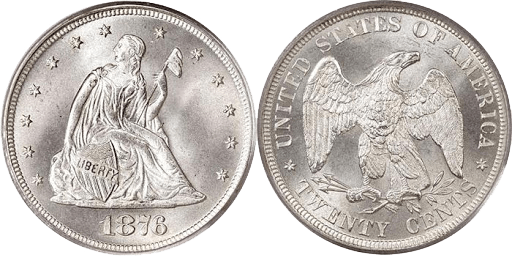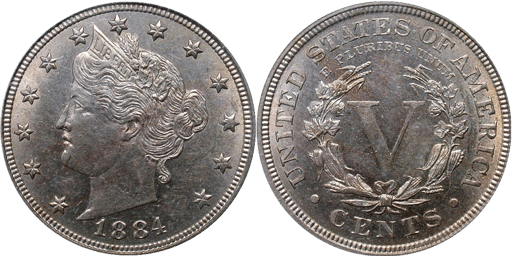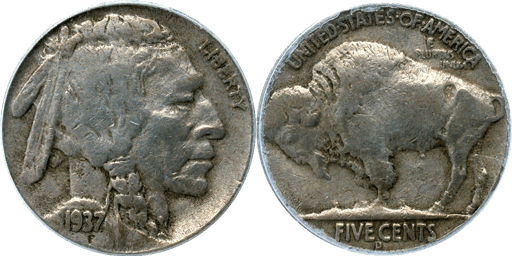Silver Coins
Morgan Silver Dollar
Peace Dollar
Identical in size and weight to the Morgan Dollars. The mint mark is located on the reverse left of the Eagle tail feathers. After the passage of the 1918 Pittman Act, the U.S. Treasury struck millions of these Peace Dollars commemorating the end of the Great War. Often mistaken for a mint mark, the designer's monogram is located below the neck. Struck between 1921 and 1928 and again in 1934 and 1935 with the 1924-S as the key or rarest coin in the series. The first year 1921, was minted as High relief but was impractical, so the balances were struck with standard relief.
Trade Dollar
Used mostly for foreign trade with Asia, the Trade Dollars did not generally circulate domestically. They were demonetized in July 1876 and replaced with the Morgan Dollars under the Bland Allison act of 1878.
Kennedy Half Dollar
Following the Assassination of President John F Kennedy in November of 1963, the Treasury began in 1964 production of the new half dollar design. With 1965-1969 dropping to 40% silver content .149 Pure silver with Post 1969 containing no silver. The Mint mark is located on the reverse.
Franklin Liberty Half Dollar
Minted in Philadelphia, Denver, and San Francisco, the Liberty Bell modeled from a sketch by John Fredrick Lewis; while largely ignored when minted, the coin has become quite popular with modern collectors.
Walking Liberty Half Dollar
They were minted in Philadelphia, Denver, and San Francisco by designer A. A. Wieman who also designed the Mercury head dime. While minted from 1916-1947, several dates were not minted 1922, 1924, 1925, 1926 1930-1932 - mint mark is located on the obverse on coins dated 1917; all others have a mint mark on reverse. Coins dated 1928-D are counterfeit
Barber Liberty Half Dollar
Production ran from 1892-1915, readily available in most grades. Some dates in mint state are elusive. They were minted in Philadelphia, Denver, New Orleans, and San Francisco.
Seated Liberty Half Dollar
Variety 1 has no motto (In God We Trust) above the Eagle. While variety 1 was only minted in Philadelphia and New Orleans, Variety 2 was also minted in San Francisco and Carson City.
Washington Liberty Quarter
1932-1998 Silver from 1932 -1964. They were minted in Philadelphia, Denver, and San Francisco. After 1964, the composition changed to 5.67 gms .750 copper .250 nickel. The reverse features a majestic modern Eagle. Bicentennial dates (1776-1976) reverse by Jack L Ahr featured the colonial drummer. Key dates are the early 1932-d and 1932-S.
Barber Liberty Quarter
The Barber, or Liberty Head, Design by Charles E Barber, is similar to the half dollar reverse depicting the Heraldic Eagle. They were minted in San Francisco, Philadelphia, Denver, and New Orleans. Key dates are the 1896-s, 1901-s, and 1913-s.
Standing Liberty Quarter
The Standing Liberty Quarter Dollars 1916-1917 were minted in Philadelphia, Denver, and San Francisco. The first year with Miss Liberty's breast exposed with no stars below the eagle on the reverse. Variety 2 modified changes, including Full head striking with varying details on the head of Miss Liberty.
Twenty Cent Piece
They were minted in Philadelphia Carson City, and San Francisco. Debuted in 1875 as a convenient denomination to make a change in the West, sometimes confused with quarter Dollars only proofs were struck 1877 and 1878. Coins dated 1876 are quite scarce, and the 1876-CC is extremely rare, and only about two dozen are known.
Shield Nickel
The Shield Nickel has an obverse similar to the 2 Cent coin and featured the 1866 design with rays between the stars on the reverse, later eliminated in 1867. Proofs were only minted in 1877 and 1878 from the Philadelphia mint. The key date 1867 that still had rays on the reverse in top proof condition, has a value over $30,000.
V Nickel
The Liberty Head or "V" nickel minted from 1883-1913 was known as the "racketeer" nickel. In its first year, the word "Cents " did not appear anywhere on the coin, and unscrupulous opportunists colored them gold to pass off as $5 gold pieces. This was corrected in the Variety 2 type. The 1913 dated examples never circulated, and only five are known to exist valued at over $3 million. They were minted in Philadelphia, Denver, and San Francisco. The mint mark is located on the reverse left of the word "cents."
Buffalo Nickel
The Buffalo or Indian Head Nickel was minted from 1913-1938 in Philadelphia and San Francisco. The bison modeled after the bison known as "Black Diamond" housed at the New York Central Park Zoo. A few rare 3 and 3 1/2 leg varieties exist.

